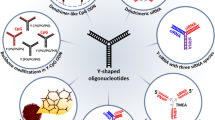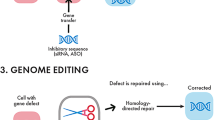Abstract
Background
Gene transfer is a potential treatment modality of genetic disease. Efficient, practical methods of DNA transfection are currently under investigation.
Materials and Methods
A β-galactosidase reporter plasmid interacted electrostatically with his-tones, poly-l-Lys, poly-l-Arg, and a combination of poly-l-Lys and poly-l-Arg. This complex was then used to transfect COS-7 cells, β-galactosidase activity was quantified and used to compare the efficiency of gene transfection in vitro. A comparison was also made of DNA transfection with the most active histone subclass, i.e., histone H2A, in the absence and presence of an anionic liposome.
Results
There was a marked increase in DNA transfection in the presence of histone H2A when compared with the control, whereas each of the other histones and polycations showed little, if any, effect. The extent of activation depends strongly on the DNA/histone ratio and is also a function of the molarity of the final Tris-acetate, pH 8, solution. The anionic liposomes used demonstrated an inhibitory effect.
Conclusions
Histone H2A significantly enhances in vitro DNA transfection whereas other histones and anionic liposomes do not. A study of the difference between histone H2A and other histone subclasses may serve to clarify some of the mechanisms and the essential components of efficient gene delivery.



Similar content being viewed by others
References
Feigner PL. (1997) Nonviral strategies for gene therapy. Sei. Am. 276: 102–106.
Zhu N, Liggitt D, Liu Y, Debs R. (1993) Systemic gene expression after intravenous DNA delivery into adult mice. Science 261: 209–211.
Debs R, Pian M, Gaensler K, Clements J, Friend DS, Dobbs L. (1992) Prolonged trans-gene expression in rodent lung cells. Am. J. Respir. Cell Mol. Biol. 7: 406–413.
Greenspan P. (1990) Phosphatidylserine-mediated delivery of cholesterol to macrophages: A novel experimental method for the generation of foam cells. Biochim. Bio-phys. Acta 1: 94–96.
Fidler IJ, Raz A, Fogler WE, Kirsh R, Bugelski P, Poste G. (1980) Design of liposomes to improve delivery of macrophage-augment-ing agents to alveolar macrophages. Cancer Res. 40: 4460–4466.
Campbell MJ. (1995) Lipofection reagents prepared by a simple ethanol injection technique. BioTechniques 18: 1027–1032.
Lee KD, Nir S, Papahadjopoulos D. (1993) Quantitative analysis of liposome-cell interactions in vitro: Rate constants of binding and endocytosis with suspension and adherent J774 cells and human monocytes. Biochemistry 3: 889–899.
Felgner JH, Kumar R, Sridhar CN, et al. (1994) Enhanced gene delivery and mechanism studies with a novel series of cationic lipid formulations. J. Biol. Chem. 269: 2550–2561.
Wolfert MA, Schacht EH, Toncheva V, Ulbrich K, Nazarova O, Seymour LW. (1996) Characterization of vectors for gene therapy formed by self-assembly of DNA with synthetic block co-polymers. Hum. Gene Ther. 7: 2123–2133.
Wolfert MA, Seymour LW. (1996) Atomic force microscopic analysis of the influence of the molecular weight of poly(L)lysine on the size of polyelectrolyte complexes formed with DNA. Gene Ther. 3: 269–273.
Singh D, Rigby PWJ. (1996) The use of histone as a facilitator to improve the efficiency of retroviral gene transfer. Nucl. Acids Res. 24: 3113–3114.
Fritz JD, Herweijer H, Zhang G, Wolff JA. (1996) Gene transfer into mammalian cells using histone-condensed plasmid DNA. Hum. Gene Ther. 7: 1395–1404.
Hagstrom JE, Sebestyen MG, Budker V, Ludtke JJ, Fritz JD, Wolff JA. (1996) Complexes of non-cationic liposomes and histone HI mediate efficient transfection of DNA without encapsulation. Biochim. Biophys. Acta 1284: 47–55.
Budker V, Hagstrom JE, Lapina O, Eifrig D, Fritz J, Wolff JA. (1997) Protein/amphi-pathic polyamine complexes enable highly efficient transfection with minimal toxicity. BioTechniques 23: 139–147.
Feigner PL, Barenholz Y, Behr JP, et al. (1997) Nomenclature for synthetic gene delivery systems. Hum. Gene Ther. 8: 511–512.
Wicks IP, Howell ML, Hancock T, Kohsaka H, Olee T, Carson DA. (1995) Bacterial lipo-polysaccharide copurifies with plasmid DNA: Implication for animal models and human gene therapy. Hum. Gene Ther. 6: 317–323.
Gavazzo P, Vergani L, Mascetti GC, Nicolini C. (1997) Effects of histone acetylation on chromatin structure. J. Cell. Biochem. 64: 466–475.
Pazin MJ, Kadonaga JT. (1997) What’s up and down with histone deacetylation and transcription. Cell 89: 325–328.
Acknowledgements
Drs. P. L. Feigner and O. Zelphati (Vical, Inc., San Diego, CA) are gratefully acknowledged for numerous helpful discussions. We thank Dr. Timo L. M. ten Hagen (Rotterdam, The Netherlands) for his gift of PC/PS liposomes that were used in preliminary experiments. Susan Sackmann is gratefully acknowledged for skillful technical assistance. D. Balicki is a recipient of The Medical Research Council of Canada’s Clinician-Scientist Award. This is manuscript 11055-MEM from The Scripps Research Institute. This work was supported by National Institutes of Health grant RR00833 and the Stein Endowment Fund.
Author information
Authors and Affiliations
Corresponding author
Rights and permissions
About this article
Cite this article
Balicki, D., Beutler, E. Histone H2A Significantly Enhances In Vitro DNA Transfection. Mol Med 3, 782–787 (1997). https://doi.org/10.1007/BF03401715
Accepted:
Published:
Issue Date:
DOI: https://doi.org/10.1007/BF03401715




